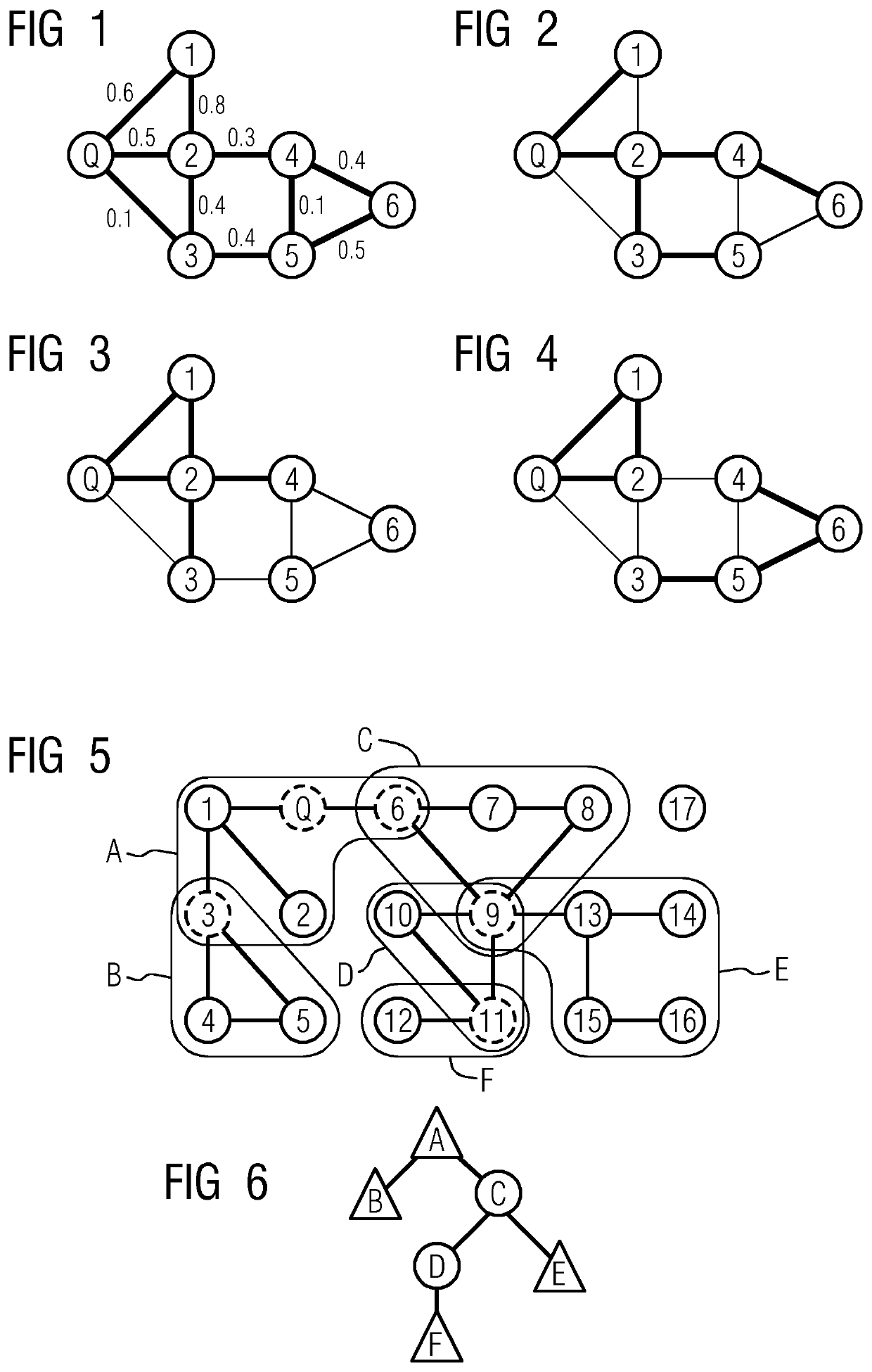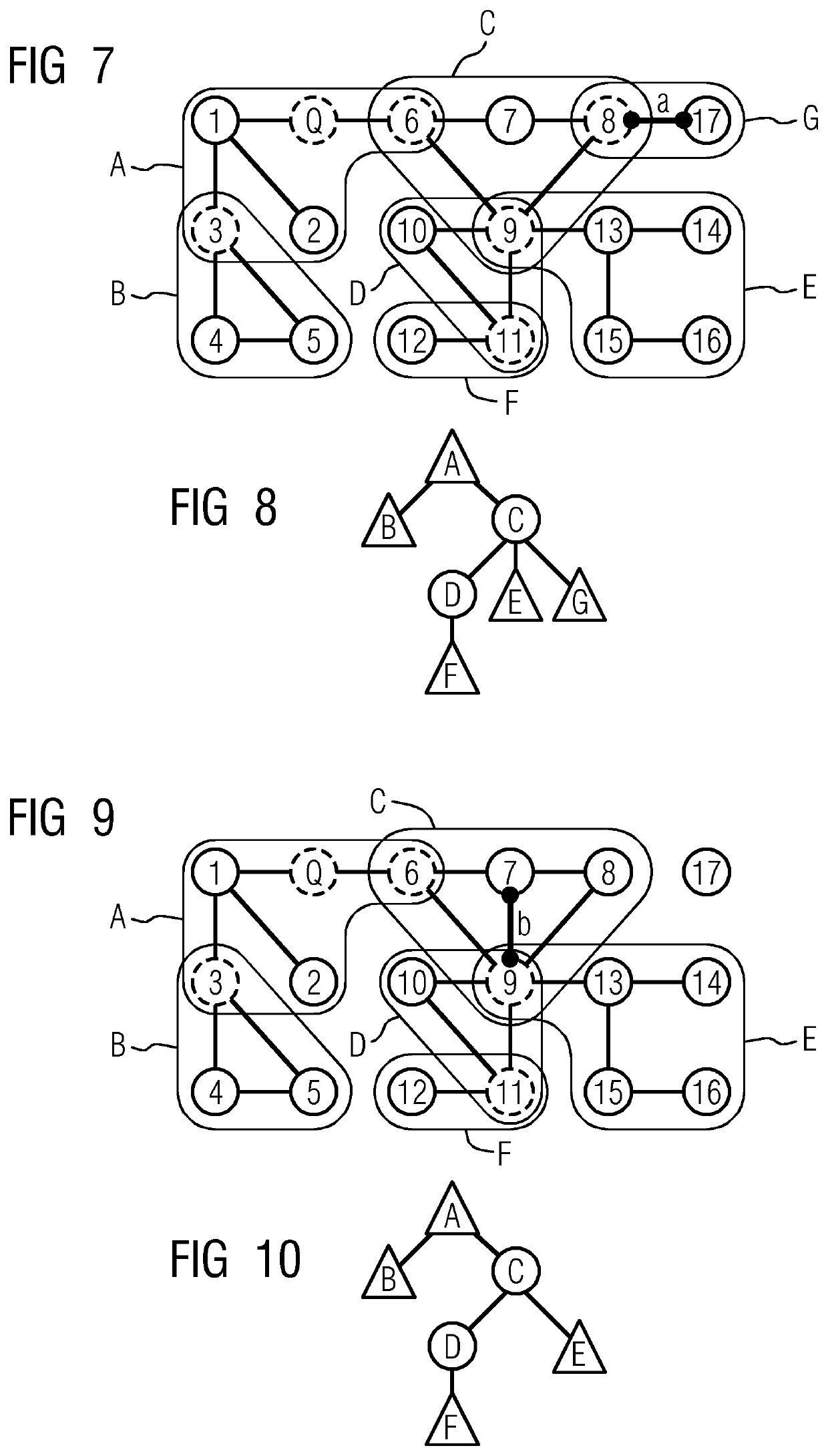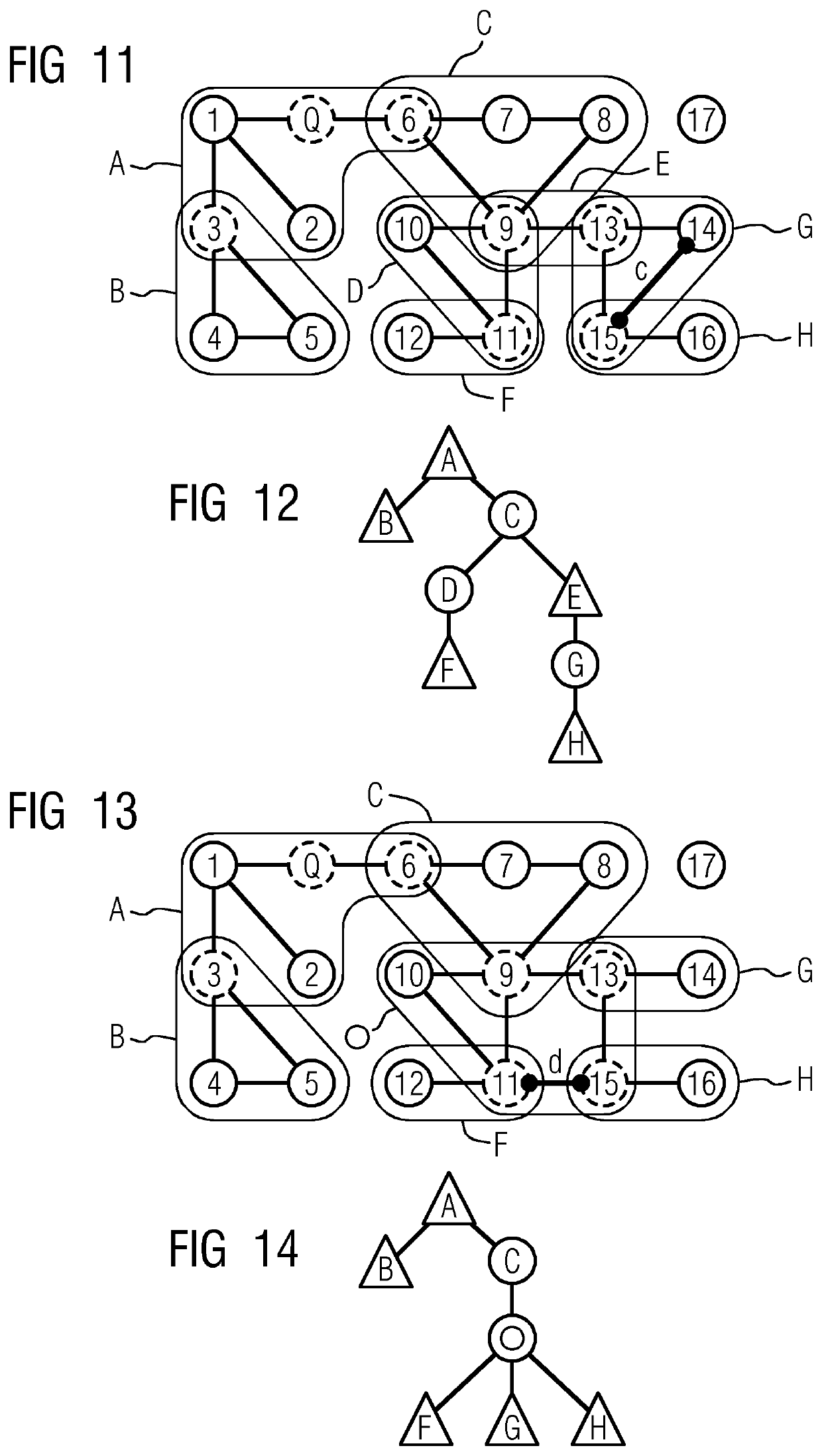Efficient data propagation in a computer network
a computer network and data technology, applied in probabilistic networks, complex mathematical operations, instruments, etc., can solve problems such as inapplicability to large communication networks, link can be unreliable and may fail, and failure to reliably propagate information between nodes
- Summary
- Abstract
- Description
- Claims
- Application Information
AI Technical Summary
Benefits of technology
Problems solved by technology
Method used
Image
Examples
case i
[0108) vsrc.isNew and vdest.isNew: We omit this case, as our edge selection algorithms presented in the section “Optimal Edge selection” below, always ensures a single connected component, and initially the Component Tree containing only vertex Q.
case ii
[0109) vsrc.isNew exclusive-or vdest.isNew: Due to considering non-directed edges, we assume without loss of generality that vdest.isNew. Thus vsrc is already connected to component tree CT.
case iia
[0110): vsrc.isNC: In this case, a new dead end is added to the non-cyclic structure NCsrc which is guaranteed to remain non-cyclic. We add vdest to NCsrc.V.
PUM
 Login to View More
Login to View More Abstract
Description
Claims
Application Information
 Login to View More
Login to View More - R&D
- Intellectual Property
- Life Sciences
- Materials
- Tech Scout
- Unparalleled Data Quality
- Higher Quality Content
- 60% Fewer Hallucinations
Browse by: Latest US Patents, China's latest patents, Technical Efficacy Thesaurus, Application Domain, Technology Topic, Popular Technical Reports.
© 2025 PatSnap. All rights reserved.Legal|Privacy policy|Modern Slavery Act Transparency Statement|Sitemap|About US| Contact US: help@patsnap.com



